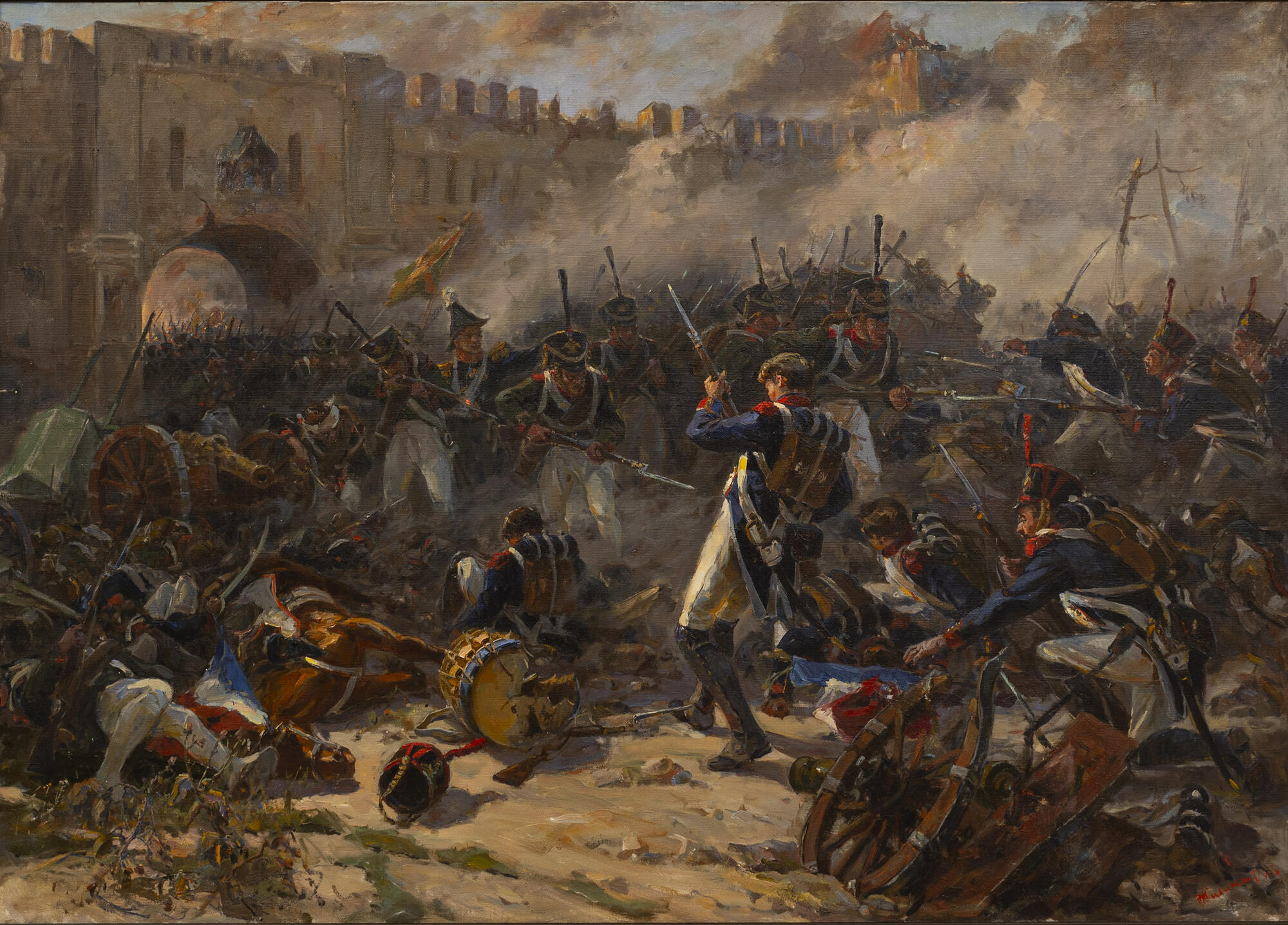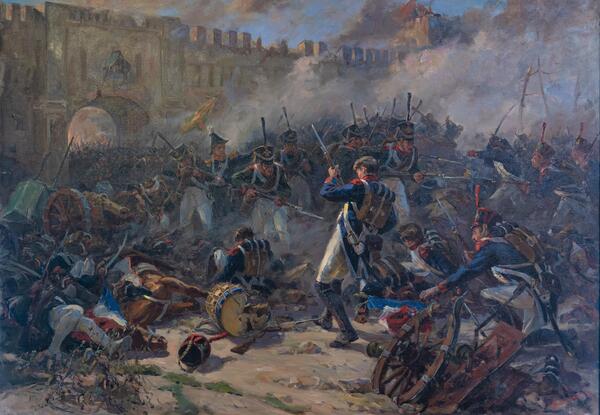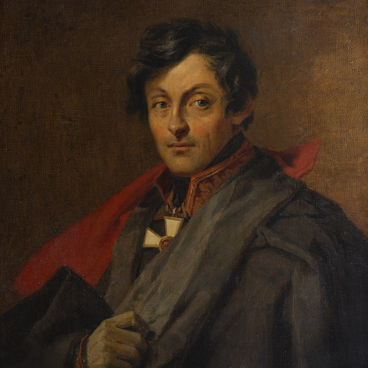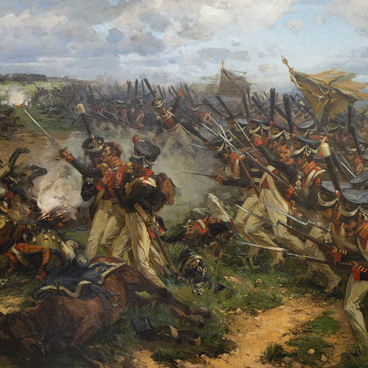The Battle of Smolensk took place on August 4–5, 1812. It became the first major battle of the Patriotic War. After the First and Second Western Armies of the Russian troops joined in Smolensk on July 22, they moved west of the city.
On August 2, Napoleon rapidly crossed the Dnieper. He tried to occupy Smolensk and cut the road to force the Russian army to give battle. Pyotr Ivanovich Bagration hastily transferred the corps of Nikolay Nikolayevich Raevsky to Smolensk.
The Russian troops maintained defensive tactics: they concentrated their forces at the entrances to the city and on the neighboring bastions. In addition, the city wall of the late 16th century was used as a cover, which has partially survived to the present day.
The French launched their first attacks on the morning of August 4, but then Napoleon ordered the assault to be postponed in the hope that his main forces would approach. On the night of August 5, most of the Russian army retreated to the east, and Smolensk was occupied by the corps of Dmitry Sergeyevich Dokhturov, reinforced by the division of Pyotr Petrovich Konovnitsyn.
In the afternoon of August 5, in an attempt to block the retreating Russian army, Napoleon decided to storm Smolensk. By six o’clock in the evening, the French managed to occupy all the suburbs, but did not enter the fortress. An intense artillery barrage followed. It caused a fire in the city, and on the night of August 6, the Russian troops left Smolensk.
In the painting “The Battle for the Molokhov Gates of the City of Smolensk”, the artist Pyotr Ivanovich Zhigimont depicted an episode of the battle on August 5. After the Russian dragoons, who were attacked by the French cavalry, were forced to retreat to the Molokhov Gates in the southern part of the city, the infantrymen of Konovnitsyn’s division repelled the advancing enemy from the city with a counterattack.
The left part of the picture shows the fortress gates, through which the Russian infantry was led by Pyotr Konovnitsyn. In the foreground, the French infantrymen are being attacked by Russian troops. The artist, Pyotr Ivanovich Zhigimont, was a member of the Mitrofan Borisovich Grekov Studio of Military Artists.
Zhigimont’s artistic interests lay mainly in the field of the Great Patriotic War, in which he himself took part, but the painter also touched on the theme of the War of 1812. As a member of the studio, he was engaged in the restoration of the famous Borodino panorama by Franz Roubaud after it was damaged in a fire. The artist was commissioned to paint the “Battle for the Molokhov Gates of the City of Smolensk” by the Borodino Museum-Reserve in 1956.






